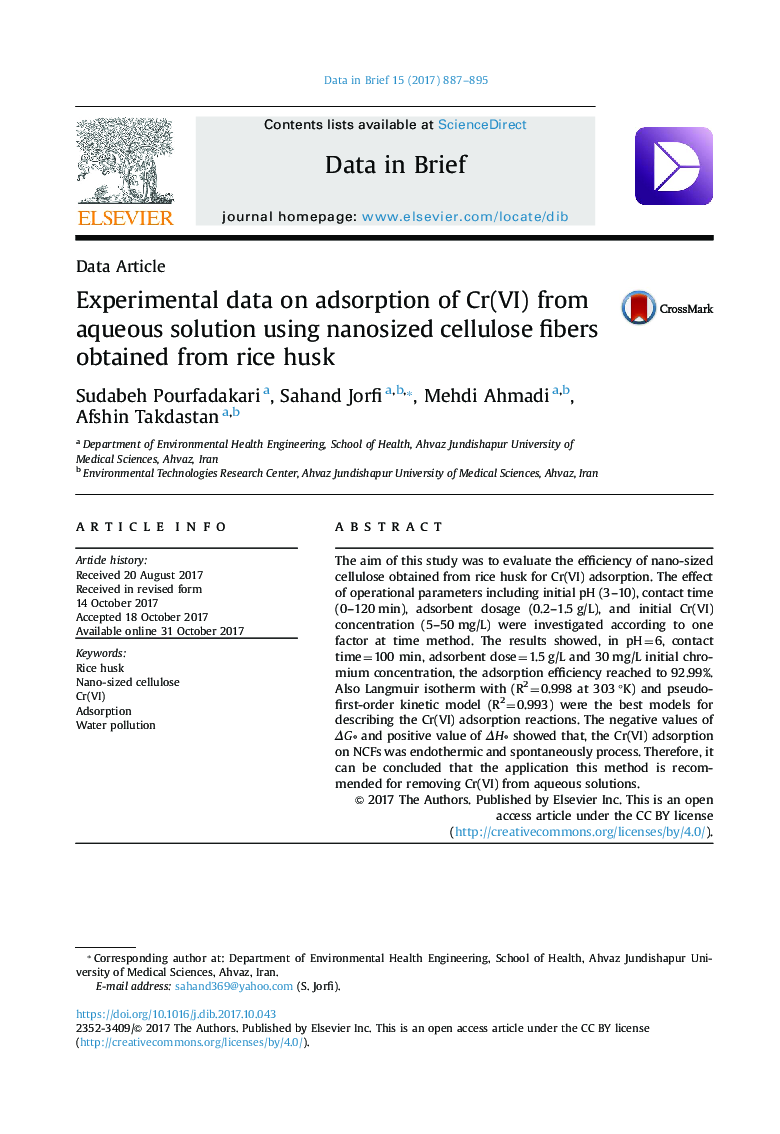| Article ID | Journal | Published Year | Pages | File Type |
|---|---|---|---|---|
| 6597404 | Data in Brief | 2017 | 9 Pages |
Abstract
The aim of this study was to evaluate the efficiency of nano-sized cellulose obtained from rice husk for Cr(VI) adsorption. The effect of operational parameters including initial pH (3-10), contact time (0-120 min), adsorbent dosage (0.2-1.5 g/L), and initial Cr(VI) concentration (5-50 mg/L) were investigated according to one factor at time method. The results showed, in pH=6, contact time=100 min, adsorbent dose=1.5 g/L and 30 mg/L initial chromium concentration, the adsorption efficiency reached to 92.99%. Also Langmuir isotherm with (R2=0.998 at 303 °K) and pseudo-first-order kinetic model (R2=0.993) were the best models for describing the Cr(VI) adsorption reactions. The negative values of ÎGâ and positive value of ÎHâ showed that, the Cr(VI) adsorption on NCFs was endothermic and spontaneously process. Therefore, it can be concluded that the application this method is recommended for removing Cr(VI) from aqueous solutions.
Related Topics
Physical Sciences and Engineering
Chemical Engineering
Chemical Engineering (General)
Authors
Sudabeh Pourfadakari, Sahand Jorfi, Mehdi Ahmadi, Afshin Takdastan,
